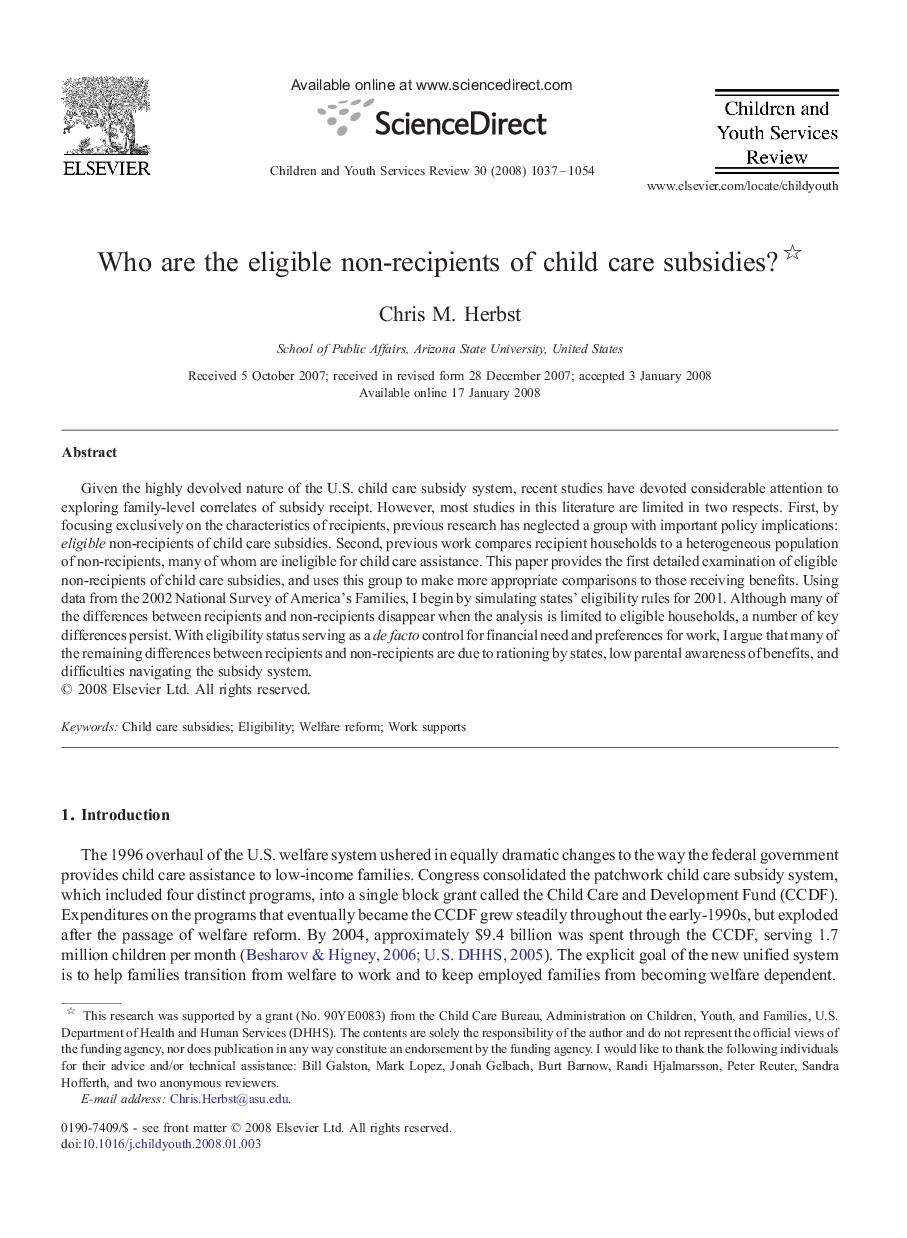| Article ID | Journal | Published Year | Pages | File Type |
|---|---|---|---|---|
| 346908 | Children and Youth Services Review | 2008 | 18 Pages |
Given the highly devolved nature of the U.S. child care subsidy system, recent studies have devoted considerable attention to exploring family-level correlates of subsidy receipt. However, most studies in this literature are limited in two respects. First, by focusing exclusively on the characteristics of recipients, previous research has neglected a group with important policy implications: eligible non-recipients of child care subsidies. Second, previous work compares recipient households to a heterogeneous population of non-recipients, many of whom are ineligible for child care assistance. This paper provides the first detailed examination of eligible non-recipients of child care subsidies, and uses this group to make more appropriate comparisons to those receiving benefits. Using data from the 2002 National Survey of America's Families, I begin by simulating states' eligibility rules for 2001. Although many of the differences between recipients and non-recipients disappear when the analysis is limited to eligible households, a number of key differences persist. With eligibility status serving as a de facto control for financial need and preferences for work, I argue that many of the remaining differences between recipients and non-recipients are due to rationing by states, low parental awareness of benefits, and difficulties navigating the subsidy system.
